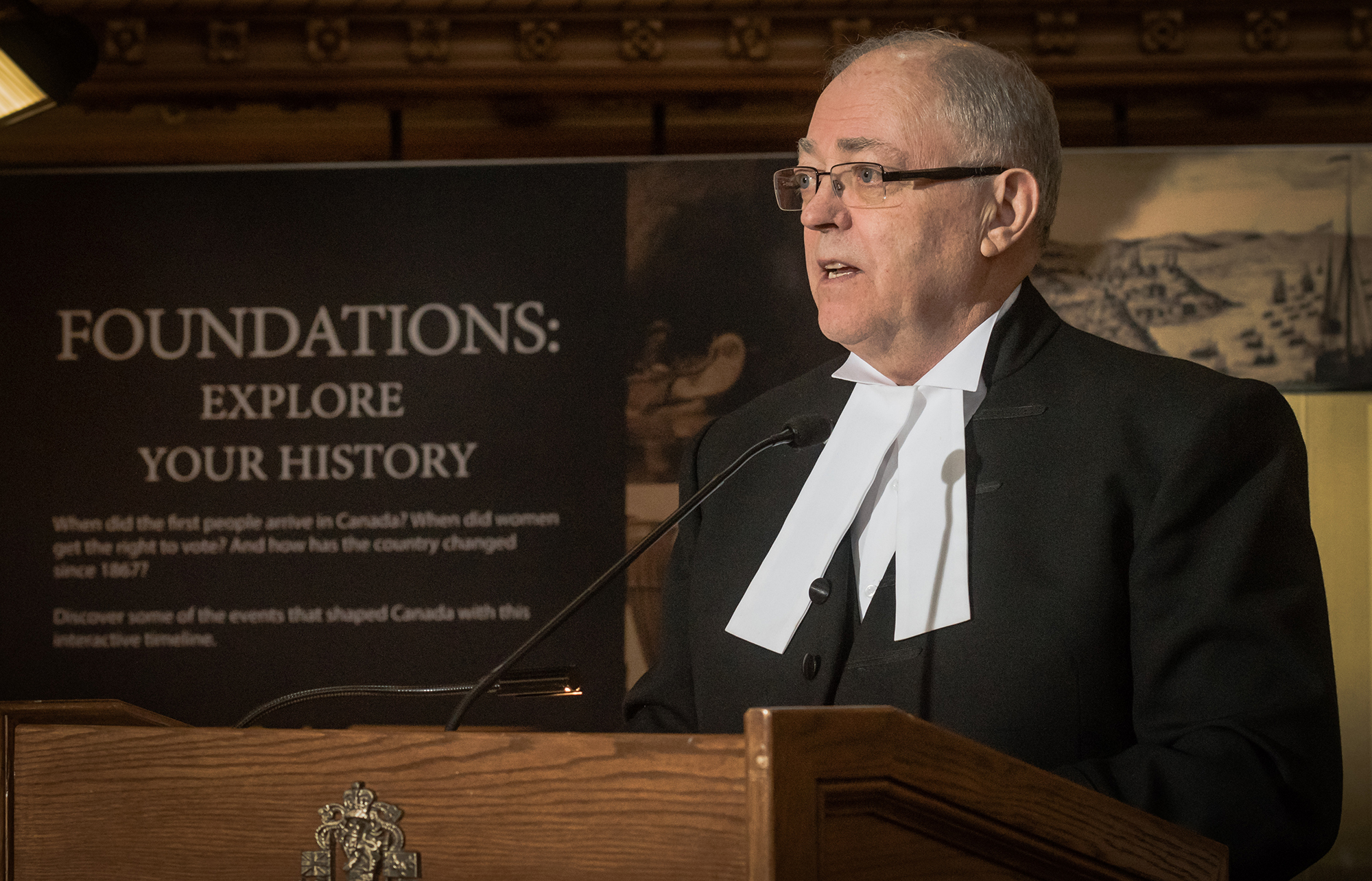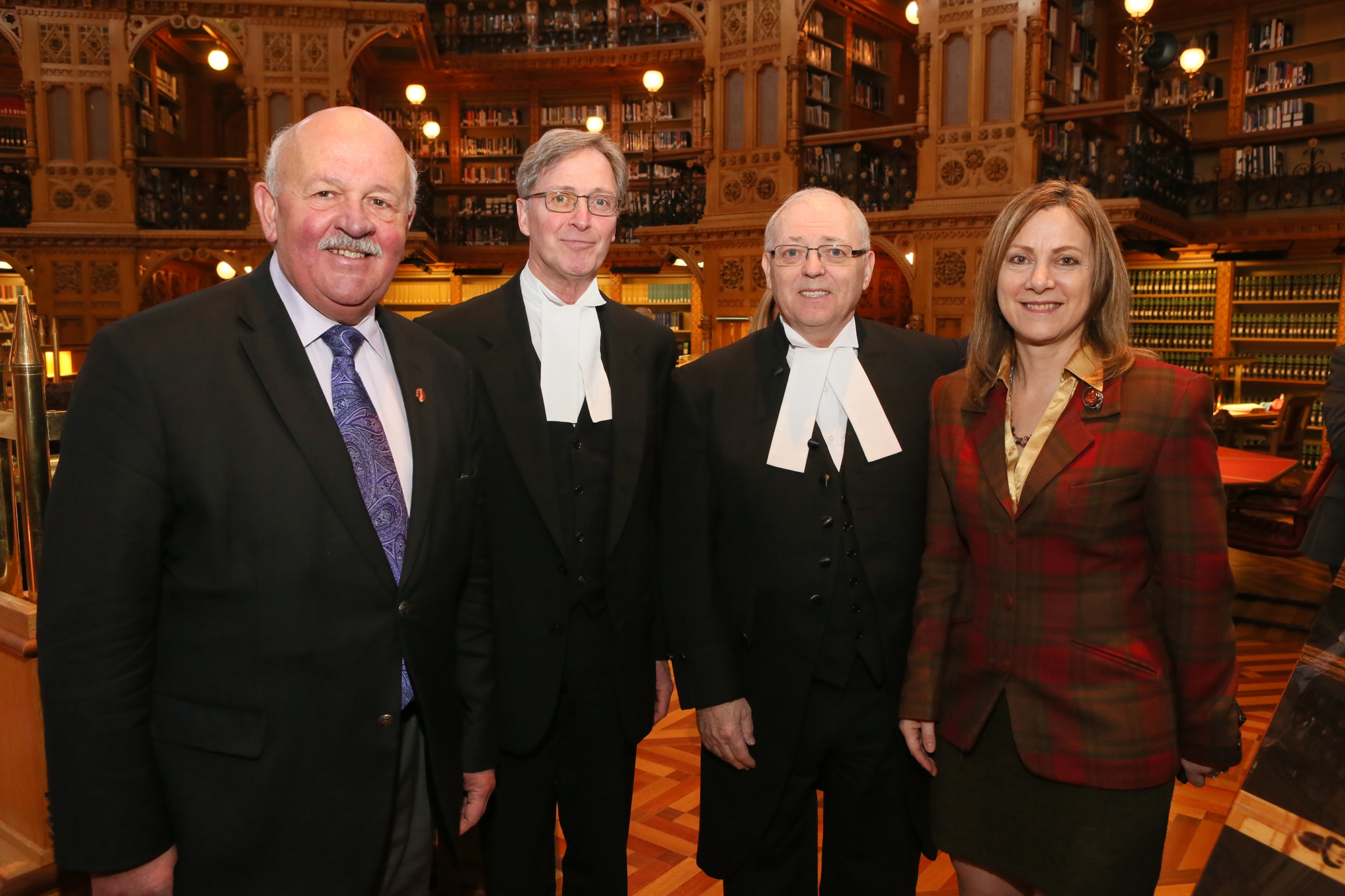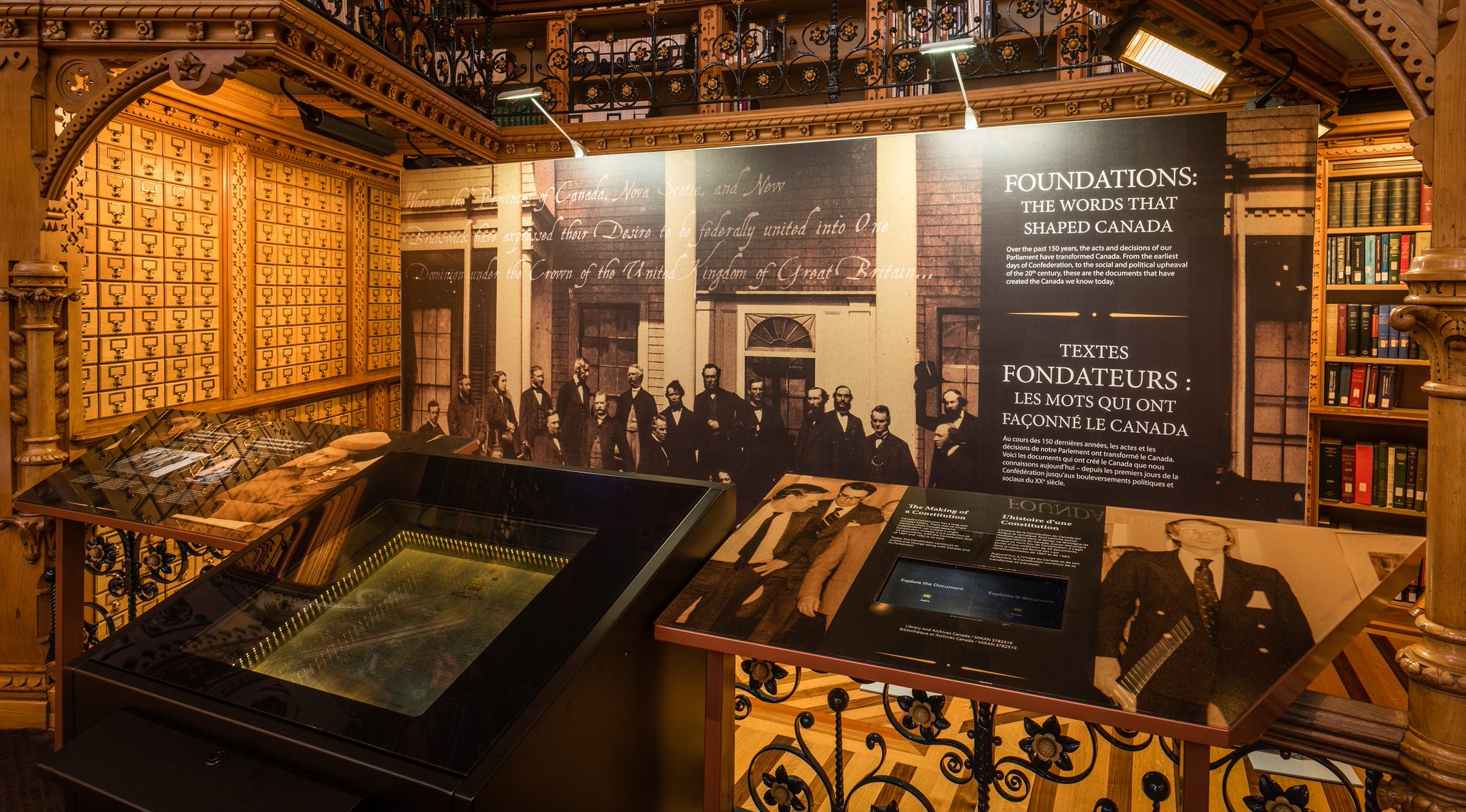Speech at the opening of a special Library of Parliament Exhibit – Foundations: The Words that Shaped Canada
Speaker Regan, Ms. L’Heureux, Mr. Berthiaume, fellow parliamentarians, distinguished guests, ladies and gentlemen,
I would like to thank you all for your presence here with us this morning. It is a great honour for me to welcome you to this ceremony.
I am delighted to be here for the inauguration of this impressive exhibit: Foundations: The Words that Shaped Canada.
Thanks to a partnership between the Library of Parliament and Library and Archives Canada, we have the opportunity to view six priceless historical documents in a single exhibit:
- the British North America Act (1867);
- the first Speech from the Throne (1867);
- the North‑West Territories Proclamation (1869);
- the Statute of Westminster (1931);
- the Canadian Bill of Rights (1960); and
- the Proclamation of the Constitution Act, 1982.
As the evocative title of this exhibit indicates, these documents mark important moments in Canada’s development.
Today, let me tell you about three of those defining moments in Canada’s history.
To start, the British North America Act, 1867, is a remarkable document.
It is the core of our Constitution. It is the law that empowered Parliament to act for “Peace, Order and Good Government.” Above all, it is the legislation that created Canada.
A century-and-a-half later, the intrinsic values of Canadian democracy within this Act are every bit as relevant now as they were in 1867.
While the BNA Act was British legislation, its provisions were drafted by representatives from New Brunswick, Nova Scotia and the Province of Canada. We can see this reflected in the spirit of the text.
Indeed, our founding document is marked by a desire to reach a compromise. This was a compromise between the majority and a linguistic minority that wished to retain its language, religion and identity.
In a rapidly evolving North American context, it was also a political compromise among formerly independent colonies that sought unity but fought to retain certain powers in the face of centralizing forces.
These compromises were crucial to closing the Confederation deal.
These compromises remain at the heart of the Canadian federation and can be seen in the way it functions today.
The copy of the BNA Act on display belonged to Sir John A. Macdonald; his name is engraved on the cover. The inside text also contains notes handwritten by our first prime minister.
Enacted on March 29, 1867, the BNA Act came into force on July 1st.
After Canada’s first general election, our Governor General, Sir Charles Stanley Monck, 4th Viscount Monck, launched the First Session of Canada’s Parliament by reading the very first Speech from the Throne.
This inaugural address, on November 7, 1867, outlined the vision for Canada, with measures including a call for western settlement. The goal of transcontinental expansion reminds us that, at the time, our country’s geography was much different than it is today.
The Governor General concluded his speech by expressing his hopes for the new country, where “peace, security and prosperity prevail.” He said,
I fervently pray that your aspirations may be directed to such high and patriotic objects, and that you may be endowed with such a spirit of moderation and wisdom as will cause you to render the great work of Union which has been achieved, a blessing to yourselves and your posterity, and a fresh starting point in the moral, political and material advancement of the people of Canada.
You will be able to read the two manuscript copies of the Speech from the Throne, one in English and the other in French.
Note that they were not written by the same person.
In addition, the Debates of the Senate show that Governor General Monck took it upon himself to read the entire speech in both English and French.
The exhibit next takes us forward two years to 1869. Pursuing its goal of westward expansion, the Government of Canada negotiated the purchase of Rupert’s Land, the vast prairie region owned by the Hudson’s Bay Company.
As Minister of Public Works, the Honourable William McDougall played a key role in the negotiations.
In the fall of 1869, William McDougall set off to take possession of the land now known as Manitoba, and to assume his new position as Lieutenant Governor of the North‑West Territories.
During an attempt to cross the U.S. border to reach Fort Garry, an armed group of Métis barred his passage. He retreated to Pembina, North Dakota, where he remained for a month with his children and some of his entourage.
McDougall believed that Rupert’s Land was to be transferred to Canada on December 1, 1869.
He did not know that the Canadian government had postponed the transfer due to political problems in the Red River Colony.
McDougall reportedly crossed the border in the middle of the night on November 30, 1869, and, surrounded by close associates, read aloud the North‑West Territories Proclamation.
This premature declaration aggravated the Métis, who responded by establishing a provisional government to negotiate directly with the government.
Some say that the proclamation played a role in sparking the Red River Rebellion.
As the British North America Act of 1867, the first Speech from the Throne and the North‑West Territories Proclamation reveal, the 19th century was clearly a tumultuous period, but one which resulted in the emergence of a new nation. Canadian Confederation was born.
Before I yield the floor to my colleague, the Speaker of the House of Commons, I would like to thank all those who worked to create this superb exhibit.
To Sonia L’Heureux and her dedicated team at the Library of Parliament, I offer my deepest thanks.
We must also pay tribute to the incredible staff at Library and Archives Canada, led by the Chief Librarian and Archivist, Guy Berthiaume.
I wish to extend my appreciation to all members of the project team, who provided the support for this interactive exhibit.
As we celebrate 150 years of Confederation, know that your efforts will enable tens of thousands of visitors over the next few months to learn more about the history and development of our great country.
Thank you.



